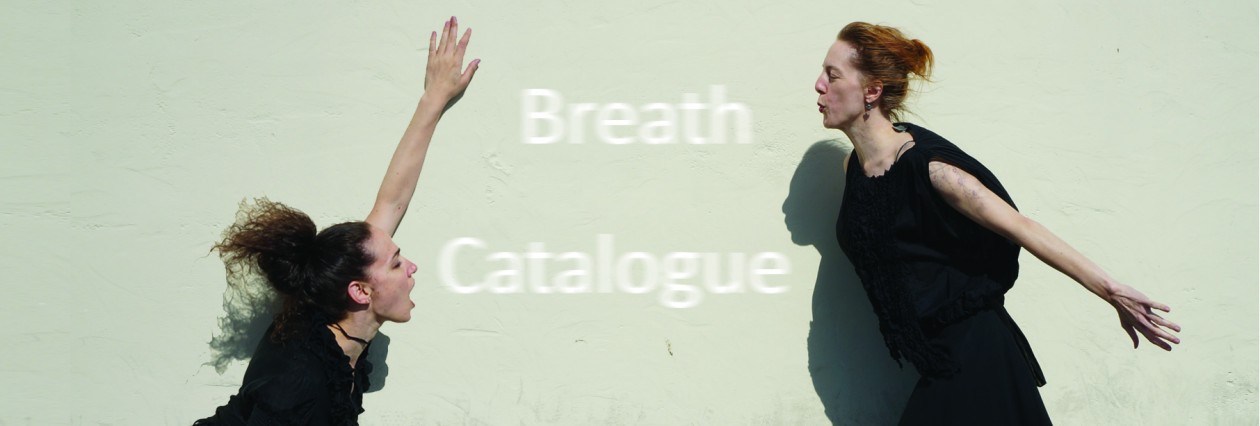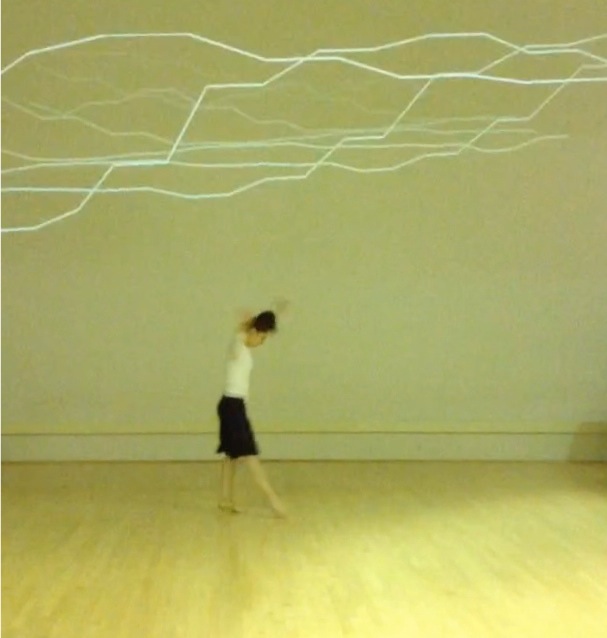(first posted at The Life of Breath)
I am currently collaborating on Breath Catalogue, which is a practice-based research project that combines choreographic methods with medical technology to externalize breath as experience. Dance artists inherently link breathing and movement patterns in both creation and performance. Our goal is to expand the common dance connection between breath and gesture by visualizing the data obtained from the mover’s breath, and inserting this into the composition process to make the breath perceptible to the spectator.
In the first phase, my collaborators (artist/scholar Megan Nicely, and data scientist Ben Gimpert) and I conducted preliminary research and development using prototypes of medical breath monitors from the San Francisco-based start-up Spire. We wanted to understand how this technology might change the way we not only move but also think about moving, by pushing us into less familiar relationships with the breath that is so intrinsic to what we do. We asked how attending to the visualized sensor data could change the conditions under which we dance. (If you are curious about the genesis of the project and some of the ideas that we initially workshopped, I wrote a post for Spire’s blog back in September).
Now we have returned to the studio for a more protracted period of research. The objective is to build a choreographic ‘cabinet of curiosities’ in performance form, where what are collected and shared are palpable experiences of and data on the performers’ breathing. One of the things that struck me in the first stage was how unpredictable, messy, and varied our breath was under different tasks. What appeals to us about the idea of the cabinet or catalogue is the possibility to retrieve these different breath samples in new circumstances through the process of live dance. At the same time, it gives us the opportunity to treat new performances as breath events that can themselves be collected as the catalogue continues to accumulate and grow.
One of the key elements in our approach to Breath Catalogue is the possibility of breath as something that moves through our body — a quality that we move and that also moves us, but that also has a force of its own. At this point in the process, we have come to see three overarching aspects to our experiments with what we call the external agency of this breath. The first is the way that breath might create choreographic structures or games, changing the nature of the relationship between two performers. In this way, we might think of an unpredictable ‘breath object’ in the sense that the choreographer William Forsythe speaks about ‘choreographic objects‘. The second has to do with the ways in which manipulating breath changes the sensorial experience of the moving body. The body feels different with different breath techniques, even as the movement task remains the same. And the third has to do with building a theatrical environment based on magnifying and scaling the minutiae of breath experiences. Even though each of these three aspects intrinsically calls on the others, this provisional categorization is productive in helping us make sense of what it means to bring choreographic thinking to breath and share it with others.
As Breath Catalogue continues, we are excited to be a part of the Life of Breath project. We want to continue to explore how our expertise in this choreographic means of externalizing breath as experience can play a part in this larger project on the clinical implications of medical humanities research for respiratory illnesses.

